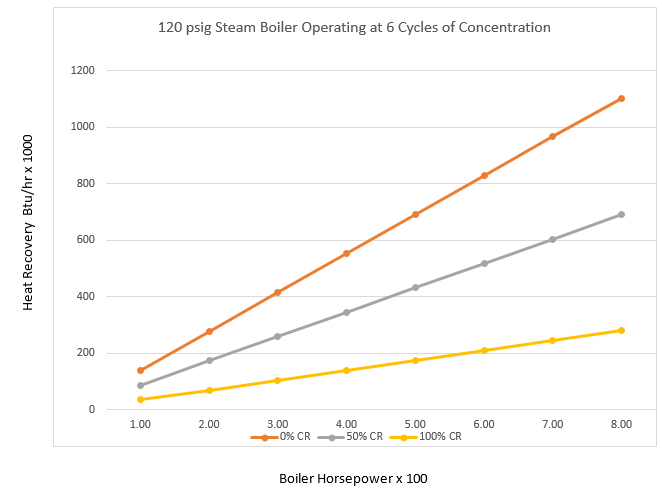5 Hidden Rules to Improve Steam System Efficiency
If you want to optimize the energy usage of your steam plant, consider these five general rules of thumb to improve steam system efficiency.
1. Lower boiler exhaust flue temperatures
For every 40°F you lower the boiler exhaust flue temperature, you can expect about 1% combustion efficiency gain. Utilizing an economizer in the exhaust stack will reduce flue temperatures and transfer that heat energy to the boiler’s water supply. This is a great way to preheat feed water prior to injection into the boiler. The supply feed water should be fully de-aerated to prevent oxygen pitting, the most common cause of economizer failure. Also, take care not to lower the flue gas temperature to less than 200°F. This will cause corrosive flue gas condensing which will deteriorate boiler exhaust systems.

Economizer and Blow Down Heat Recovery System Integration, from Cleaver-Brooks Inc.
2. Increase combustion air temperatures
A 50°F increase in combustion air temperature will yield about a 1% increase in boiler combustion efficiency. Economizers can also be used as an air to air heat exchanger to preheat combustion air. When air is mixed with the fuel in the burner and ignited, it produces heat energy. If less energy from combustion is needed to heat incoming air, more energy is available to be transferred to the boiler water.
3. Recover blowdown water heat
Recover blowdown water heat if you have continuous surface blowdown water flow exceeding 5% of steam flow. The blowdown water as it leaves the boiler will have the same temperature and pressure as the boiler water. Before this high-energy waste is discharged, the heat in the blowdown water can be recovered with a flash tank, a heat exchanger, or a combination of the two. The chart below show the potential heat recovery for 100-800 horsepower high pressure boilers with three different condensate return (CR) rates.

4. Insulate pipes and hot surfaces
Uninsulated pipes and other hot surfaces will lose about 3 btu/ft2- ΔF/hr of heat. To lessen this loss, equipment should be sufficiently insulated, especially around steam piping and feed water tanks which can reach temperatures greater than 200°F. Radiant and convective heat losses from hot surfaces can add up quickly. Heat losses from a 200°F surface can range from 225 to 565 btu/ft2-hr. This range is the result of less heat being lost from horizontal surfaces with no air flow versus vertical cylinders with high air flow.
5. Conduct proper maintenance of steam plants
Proper maintenance of steam plants can decrease energy consumption anyware from 5-10% depending on the design of the system. Poorly maintained equipment can significantly increase energy consumption. Scheduled tasks in a Computerized Maintenance Management System (CMMS) or similar tool can keep efficiency improvements from degrading. Periodically schedule inspections to ensure insulation, water quality, corrosion protection, and system measurements are in check. Inspections of this type only take a few minutes, and can pay off big in the long run.
The Q Ware CMMS system is a cost effective solution that is easy to implement and can save hundreds of dollars when used for preventive maintenance. For more information on Q Ware CMMS, visit www.qwarecmms.com.
Here are some other helpful posts:
Carey Merritt
Hands on Engineer with alot of steam and industrial water treatment experience.